◎ Outline
◎ Motivation
2. Theory
■ 사염화탄소(Carbon tetrachloride, CCl4)
■ 자일렌 (크실렌, 디메틸벤젠 Xylene, C6H4(CH3)2)
Activity coefficient와 Gibbs free energy의 관계
Equations
(1) Margules equation
(2) Van Laar equation
(3) Wilson equaiton
(4) NRTL equation
(5) UNIFAC equation
열역학적 부합성(일관성, Consistency)에 대한 설명
3. Procedure & Result
(1) Procedure
(2) Coefficient
(3) Pxy Data + Consistency Test
(4) Excess Properties
(5) Barkers Method
4. Conclusion
5. Reference
6. Coding
1-1) Margules with o-xylene
1-2) Margules with p-xylene
2-1) Van Laar with o-xylene
2-2) Van Laar with p-xylene
3-1) Wilson with o-xylene
3-2)Wilson with p-xylene
4) NRTL with p-xylene
5) UNIQUAC
6-1) Barkers Method with o-xylene
6-2) Barkers Method with p-xylene
6-3) Barkers Method - Functions
p2sat = (exp(A2-B2/(T-273.15 + C2)))/100*750.16;
A12 = -0.1935; % Margules 파라미터 값 at 30 degreeC
A21 = -0.1313;
% Experimental VLE DATA
x1_ex = [0.0, 0.1112, 0.2074, 0.3577, 0.4670, 0.5438, 0.6012, 0.6822, 0.7384, 0.7780, 0.8257, 0.8786, 1.000]; % 조성
x2_ex = 1-x1_ex;
y1_ex = [0.0, 0.5618, 0.7368, 0.8636, 0.9120, 0.9353, 0.9489, 0.9644, 0.9730, 0.9784, 0.9841, 0.9896, 1.000]; % 조성
y2_ex = 1-y1_ex;
P_ex = [12.06, 24.47, 35.93, 55.30, 69.98, 80.39, 87.97, 99.39, 107.16, 112.42, 118.92, 125.71, 141.95]; % (mmHg DATA)
% Margules 이론값
max=length(x1);
for i=1:max
lnr1(i)= (A12+2*(A21-A12)*x1(i))*(x2(i)^2);
lnr2(i) =(A21+2*(A12-A21)*x2(i))*(x1(i)^2);
GeRT(i)=(x1(i)*lnr1(i))+(x2(i)*lnr2(i));
if (x1(i)==0) | (x1(i)==1) % x1-1일때와 x1=0일때 GexxRT=0으로 가정 (후에 외삽)
GexxRT(i)= 0;
else
GexxRT(i)= GeRT(i)/(x1(i)*x2(i));
end
end
GexxRT(1)=(GexxRT(3)-GexxRT(2))/(x1(3)-x1(2))*(-x1(2))+GexxRT(2);
GexxRT(101)=(GexxRT(100)-GexxRT(99))/(x1(100)-x1(99))*(1-x1(100))+GexxRT(100); %외삽하여 x1=0,x1=1일때 GexxRT=0값을 얻음
% 실험값
limit=length(x1_ex);
for i=1:limit
r1_ex(i) = (y1_ex(i)*P_ex(i))/(x1_ex(i)*p1sat);
lnr1_ex(i) = log(r1_ex(i)) ;
r2_ex(i) = (y2_ex(i)*P_ex(i))/(x2_ex(i)*p2sat);
lnr2_ex(i)= log(r2_ex(i));
GeRT_ex(i)=(x1_ex(i)*lnr1_ex(i))+(x2_ex(i)*lnr2_ex(i));
GexxRT_ex(i) = GeRT_ex(i)/(x1_ex(i)*x2_ex(i));
end
for i=1:max
P_x(i)=x1(i)*exp(lnr1(i))*p1sat+x2(i)*exp(lnr2(i))*p2sat;
y1_cal(i)=(x1(i)*exp(lnr1(i))*p1sat)/(x1(i)*exp(lnr1(i))*p1sat+x2(i)*exp(lnr2(i))*p2sat);
end
% lnr1, lnr2, G/x1x2RT, G/RT 그림 (이론값 실험값)
subplot(2,2,3);
plot(x1,lnr1,'b-',x1,lnr2,'g-',x1,GeRT,'k' ,x1,GexxRT,'r', x1_ex,lnr1_ex,'bSquare',x1_ex,lnr2_ex,'gDiamond',x1_ex ,GeRT_ex, 'kx', x1_ex,GexxRT_ex,'ro')
legend('lnr1','lnr2','Ge/RT','Ge/x1x2RT','lnr1 실험값','lnr2 실험값','Ge/RT 실험값','Ge/x1x2RT 실험값'),xlabel('x1'),axis([0,1,-0.2,1.5]),title('Ge/RT Ge/x1x2RT lnr1 lnr2 p-xylene(2) - ccl₄(1)(303.15K) ; Margules');
% P-x-y diagram




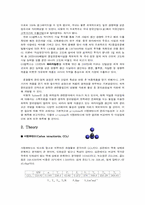
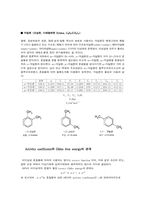
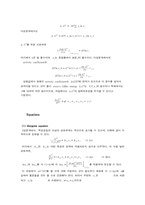
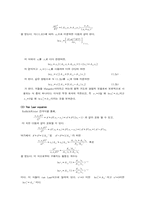
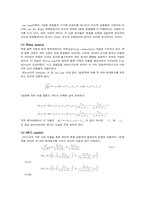
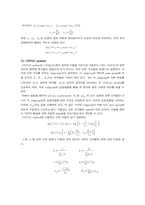
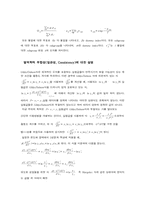
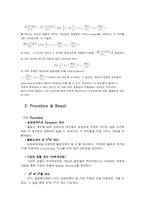
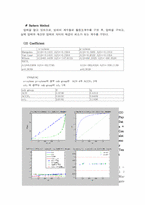
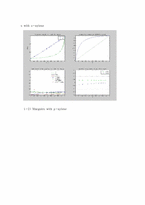

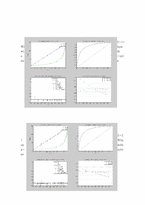
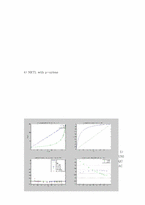
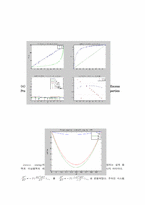
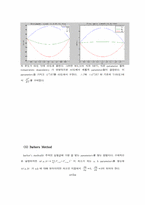


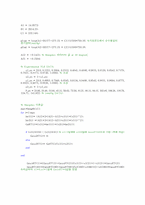
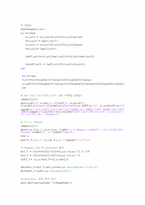
 분야
분야


